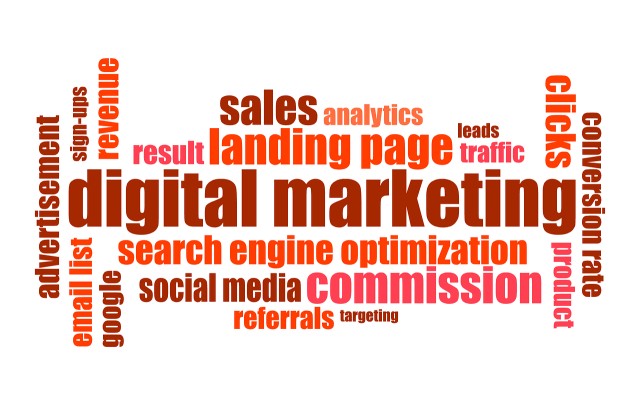Do you tell stories? Are you a digital marketer? Storytelling is a powerful tool in digital marketing. It can help your brand stand out and connect with your audience.
But a lot of digital marketers don’t know how to drives sales using storytelling. They don’t know the importance and how it can take your digital marketing skills to the next level.
In this article, we will explore the importance of storytelling in the digital age.
READ ALSO: What Are the Top 50 Best-Selling Products on Amazon in 2024?
What is Storytelling?
Story telling is the art of using narrative to communicate a message. It involves creating a compelling story that engages the audience and conveys a specific message or emotion.
In the context of digital marketing, storytelling is the process of using narrative-based content to promote your brand, products, or services.
The Benefits of Storytelling in Digital Marketing
Storytelling offers several benefits for digital marketers. Here are some of the key advantages:
1. Builds Emotional Connections
Storytelling has the power to evoke emotions in your audience. By creating a narrative that resonates with your target audience, you can build stronger emotional connections with them. This can lead to increased brand loyalty and a deeper sense of engagement.
2. Differentiates Your Brand
In a crowded digital world, it can be challenging to stand out from the competition. Storytelling can help your brand differentiate itself by showcasing its unique personality, values, and mission.
3. Enhances Memorability
Stories are more memorable than facts or data alone. By presenting information in a narrative format, you can make it more engaging and easier for your audience to remember.
4. Increases Engagement
Storytelling can increase engagement by capturing the attention of your audience and encouraging them to interact with your content. This can lead to higher click-through rates, shares, and conversions.
5. Builds Trust and Credibility
Effective storytelling can help build trust and credibility with your audience. By sharing authentic stories that showcase your brand’s values and expertise, you can establish yourself as a reliable and trustworthy partner.
Types of Storytelling in Digital Marketing
There are several different types of storytelling that can be used in digital marketing. Here are some of the most common approaches:
- Brand Stories
Brand stories focus on the history, values, and mission of your company. These stories can help to humanize your brand and create a deeper connection with your audience.
- Customer Stories
Customer stories highlight the experiences of your clients or customers. These stories can be used to showcase the benefits of your products or services and build social proof.
- Employee Stories
Employee stories focus on the individuals who make up your organization. These stories can help to showcase your company culture and the people behind your brand.
- Product Stories
Product stories focus on the development, features, and use cases of your products. These stories can be used to educate and inspire your audience.
- Founder Stories
Founder stories highlight the journey and experiences of the individuals who started your company. These stories can be used to create a personal connection with your audience and showcase your brand’s origins.
How to Craft Effective Storytelling Content
To create effective storytelling content, it’s important to follow these best practices:
1. Identify Your Audience
Before you start crafting your story, it’s important to understand your target audience. What are their pain points, interests, and motivations? By understanding your audience, you can create a story that resonates with them.
2. Define Your Narrative
Decide on the key message or theme that you want to convey through your story. This will help to guide the development of your narrative and ensure that your story is focused and cohesive.
3. Create Relatable Characters
Develop characters that your audience can relate to. These characters should have distinct personalities, motivations, and experiences that resonate with your target audience.
4. Show, Don’t Tell
Instead of simply stating facts or information, use storytelling techniques to show your audience what’s happening. This can involve using vivid descriptions, dialogue, and visual elements to bring your story to life.
5. Incorporate Emotional Moments
Effective storytelling often involves the use of emotional moments or experiences that help to create a deeper connection with the audience. These moments can be joyful, inspiring, or even challenging, as long as they resonate with your target audience.
6. Use Multimedia Elements
Incorporate multimedia elements, such as images, videos, or audio, to enhance your storytelling content. These elements can help to make your story more engaging and memorable.
7. Optimize for Digital Platforms
Ensure that your storytelling content is optimized for digital platforms, such as social media, blogs, and websites. This may involve adjusting the length, format, and distribution of your content to ensure it resonates with your audience.
Storytelling Examples in Digital Marketing
Here are some examples of successful storytelling in digital marketing:
1. Airbnb’s “Belong Anywhere” Campaign
Airbnb’s “Belong Anywhere” campaign uses storytelling to showcase the unique experiences and connections that travelers can have when using their platform. The campaign features a series of short films that highlight the personal stories of Airbnb hosts and guests, helping to create a sense of belonging and community.
2. GoPro’s User-Generated Content
GoPro’s marketing strategy heavily relies on user-generated content, featuring stories and videos created by their customers. This approach not only showcases the capabilities of their products but also creates a sense of community and user engagement.
3. Dove’s “Real Beauty” Campaign
Dove’s “Real Beauty” campaign uses storytelling to challenge traditional beauty standards and promote a message of self-acceptance and body positivity. The campaign features a series of short films and advertisements that showcase the diverse experiences and perspectives of real women.
4. Red Bull’s Branded Content
Red Bull is known for its innovative and engaging branded content, which often features stories of adventure, exploration, and extreme sports. By creating content that aligns with their brand values and speaks to their target audience, Red Bull has been able to build a strong and loyal following.
5. Patagonia’s Environmental Activism
Patagonia’s marketing strategy is closely tied to its commitment to environmental activism. The company often uses storytelling to highlight its efforts to protect the planet and inspire its customers to take action. This approach has helped to build a strong brand identity and a devoted customer base.
Implementing Storytelling in Your Digital Marketing Strategy
To incorporate storytelling into your digital marketing strategy, follow these steps:
- Conduct Research
Start by conducting research to better understand your target audience, their pain points, and the types of stories that are likely to resonate with them.
- Develop a Storytelling Framework
Create a framework for your storytelling content that aligns with your brand’s values, messaging, and marketing objectives.
- Identify Relevant Storytelling Opportunities
Identify opportunities to incorporate storytelling into your existing digital marketing content, such as blog posts, social media updates, and email campaigns.
- Create Compelling Stories
Use the best practices outlined earlier to create compelling, engaging, and visually-appealing stories that will capture the attention of your audience.
- Distribute and Promote Your Storytelling Content
Strategically distribute and promote your storytelling content across your digital marketing channels to maximize its reach and impact.
- Measure and Optimize
Monitor the performance of your storytelling content and make adjustments as needed to improve its effectiveness.
Conclusion
Storytelling is a powerful tool in digital marketing that can help your brand stand out, build stronger connections with your audience, and drive meaningful results.
Incorporating storytelling into your digital marketing strategy will help you create content that is more engaging, memorable, and impactful.
The key to successful storytelling in digital marketing is to focus on creating authentic, relatable, and emotionally-resonant narratives that align with your brand’s values and resonate with your target audience.
Following the best practices outlined in this article will enable you to unlock the power of storytelling and take your digital marketing efforts to new heights.



This is a great article for digital marketers especially on the fact that it emphasized onh ow to craft effective storytelling content